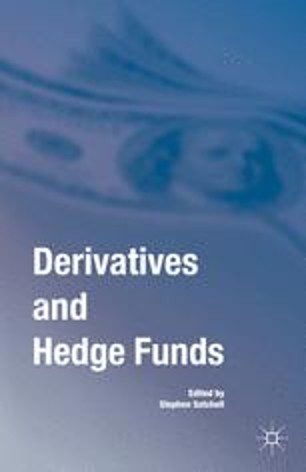Law of Supply: Schedule, Curve, Function, Assumptions and Exception

As shown by arrow marks, at price P1, P2, and P3 quantity supplied increases when supply increases causing a rightward shift in the supply curve. Similarly, progress in technology used for production of a commodity which increases productivity and reduces cost per unit will also cause the supply curve to shift to the right. Efficient market hypothesis states that at any given time and in a liquid market, security prices fully reflect all available information. The efficient market is like an extension of the supply and demand model which is like the core of the market economy. The term demand, refers to how much of a product or service is desired by buyers.
They increase the quantity supplied of these commodities and when the
level of prices decreases, the sellers decrease the quantity supplied. The slope of market supply curve can be obtained by calculating the supply of the slopes of individual supply curves. Market supply curve also represents the direct relationship between the quantity supplied and price of a product. When the price of a specific commodity increases, potential producers are encouraged to enter the market and produce the good to make money. However, once the price begins to decline, some businesses that do not anticipate making any money at a low price may stop production or cut it back. As the number of businesses in the market declines, it decreases the supply of the given commodity.
Discuss the assumptions of the supply and demand model inherent in the EMH.
In case the transportation cost reduces, then the supply would increase, which is invalid according to the law of supply. Similarly, if the price of the product decreases, the supplier would decrease the supply of the product in market as he/she would wait for rise in the price of the product in future. As we have seen from the study above that supply of a commodity varies directly with its price. But in some exceptional cases where supply may tend to fall with the rise in price or tend to rise with the fall in price.

As the price of a commodity increases, the supply of that commodity in the market also increases and vice-versa. This behaviour of the producers is studied through the law of supply. Government policy is likewise important and critical for the law of supply.
The Assumption, Reasons and Exceptions to Law of Supply Economics
There must no longer be any alternate within the method of Production. With the development in technique, if the cost of production is reduced, the seller could supply more even at falling prices. Another important factor causing a decrease in supply of a commodity is the rise in price of other commodities using the same factors. For example if the price of wheat rises sharply, it will become more profitable for the fanners to grow it.

A rise in price induces the prospective producers to enter into the market to produce the given commodity so as to earn higher profits. However, as the price starts falling, some firms which do not expect to earn any profits at a low price either stop the production or reduce it. It reduces the supply of the given commodity as the number of firms in the market decreases. The law of supply and demand outlines the interaction between a buyer and a seller of a resource. Supply and demand says that sellers will supply less of a product or resource as price decreases, while buyers will buy more, and vice versa, until an equilibrium price and quantity is reached. It is observed in markets that when more price of commodities are offered to
sellers.
Law of Supply Curve/Diagram
Therefore, the regulation of delivery will be valid only if the cost of Production stays constant. It means that the issue prices such as wages, hobby, rent, and so on., also are unchanged. However, the supply depends not only on the price of a product but on several other factors too. As stated above, the supply of a commodity in economics means the entire schedule or curve depicting the relationship between price and quantity supplied of the commodity, given the other factors influencing supply. In other words, while the quantity demanded has a negative or inverse relation with the price, the quantity supplied bears generally a direct relation with the price.
If the cost of production increases along with the rise in the price of product, the sellers will not find it worthwhile to produce more and supply more. Therefore, the law of supply will be valid only if the cost of production remains assumptions of law of supply constant. It implies that the factor prices such as wages, interest, rent etc., are also unchanged. This is because of positive relation between price and quantity supplied that supply curve slopes upward from left to right.
GameSquare to Report Q2 2023 Financial Results on August 14, 2023 – Digital Journal
GameSquare to Report Q2 2023 Financial Results on August 14, 2023.
Posted: Tue, 08 Aug 2023 12:15:04 GMT [source]
But, since it is diminishing returns which is generally the rule, the supply curve generally slopes upward to the right. That is, supply curve in this case will be a horizontal straight line. It is also worth mentioning that if a commodity is subject to increasing returns, the expansion of output of the commodity will lower the unit cost of production. If the quantity of natural resources (minerals, gas, coal, oil etc)
increases, the cost of production decreases. “Other things remaining the same, if the price of a commodity increases its
quantity supplied increases and if the price of a commodity decreases, quantity
supplied also decreases”. Like the law of demand, the law of supply also follows the assumption of ceteris paribus, which means that ‘other things remain unchanged or constant’.
For this, the firm can sell all the goods by lowering the price which is just the opposite of the law of supply. After a certain point, the rise in wages does not increase the supply of labour. This happens due to change in preference of labour for leisure hours.
Definition of Law of Supply
The exception to the law of supply is represented on the regressive supply curve or backward sloping curve. To understand the law of supply, it is important to discuss the concepts of demand schedule and demand curve. The law of supply can be explained through a supply schedule and a supply curve. The law of supply states that the relationship between price and supply of a product. This is because if the scale of production changes with a period of time, then it would affect the supply. Sellers are willing to offer more perishable commodities, such as fruits, vegetables, and other foods, even if prices are dropping.
- It is also assumed that there is no change in climatic situation.
- The law of supply says that as the price of an item goes up, suppliers will attempt to maximize their profits by increasing the number of items for sale.
- The law of supply or supply hypothesis gives us the relationship between price and quantity supply of the commodity.
- If, due to unforeseen changes in weather, the production of agricultural products is low, then their supply cannot be increased even at higher prices.
When price increase to Rs.4 per unit, quantity supply will also increase to 10 units, and a maximum price of Rs. 10 per unit motivates the seller to supply 25 units of product. According to the law of supply, if the price of a product rises, then the supply of the product also rises and vice versa. However, there are certain conditions where the law of supply is not applicable.
The positive relation between quantity- supplied and price lies in the nature of the costs of production which generally rise as more quantity of a good is produced. Therefore, in constant cost industry more is supplied at the same price in the long run and the law of supply does not apply in this case. As stated above, according to the law of supply there is positive relation between price and quantity supplied, that is, more quantity of a good is supplied at a higher price. As in case of other laws of economics, the law of supply is also based on some assumptions. It will be seen from the above table that when price of wheat is Rs. 500 per quintal, the 100 quintals of wheat are supplied in the market.
Fitch Affirms State of Querétaro’s Ratings; Outlook Stable – Fitch Ratings
Fitch Affirms State of Querétaro’s Ratings; Outlook Stable.
Posted: Wed, 09 Aug 2023 18:21:00 GMT [source]
If there is a changing scale of production the level of supply will change, irrespective of changes in the price of the product. “Other things remaining unchanged, the supply of a commodity rises i.e., expands with a rise in its price and falls i.e., contracts with a fall in its price. It has been observed that usually sellers are willing to supply more with a rise in prices. The bakery might also increase prices to capture extra profits, which might lessen demand, as many customers could no longer be willing to pay this kind of rate.
No change in cost of production
In terms of economics supply means “an amount of a commodity or service which sellers are willing and able to sell at a given price during a given period of time”. Government may enforce the firms and producers to offer production at prevailing market price. In such a situation producer may not be able to wait for the rise in price. The law of supply summarizes the effect price changes have on producer behavior. For example, a business will make more video game systems if the price of those systems increases. The opposite is true if the price of video game systems decreases.

In other words, supply function quantifies the relationship between quantity supplied and price of a product, while keeping the other factors at constant. The law of supply expresses the nature of relationship between quantity supplied and price of a product, while the supply function measures that relationship. Economists have studied the behaviour of both buyers and sellers. They have discovered the law of supply as a result of their findings. The law of supply describes the relationship between price and amount supplied when all other variables remain constant (ceteris paribus). If an excise duty or sales tax is levied on a product, the firms will supply the same amount of it at a higher price or less quantity of it at the same price.
The Efficient market hypothesis or, EMH is an investment theory where share price reflects all information and consistent alpha generation is impossible. It is also assumed that there is no change in climatic situation. The supply of goods
decreases at that place at previously prevailing price. In the case of the price of the product is decreasing and if the seller feels that the price will further decrease in the future then he or she may increase the supply even at decreasing price.




Leave a Reply